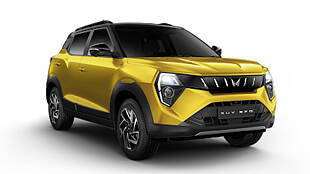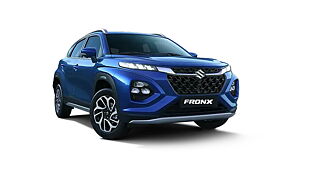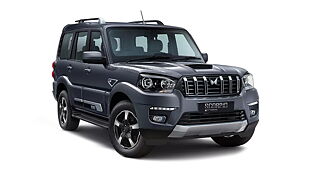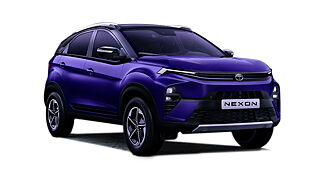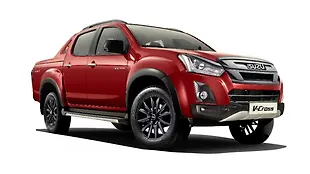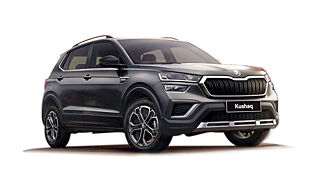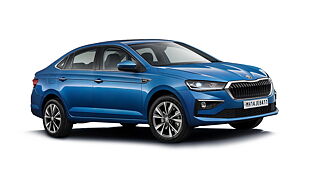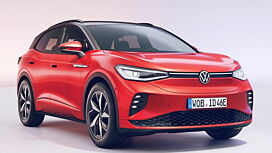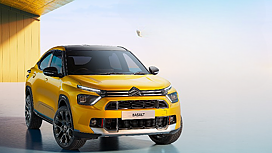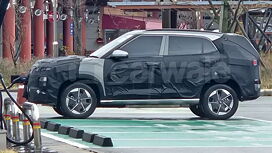Part 1

It’s evident that the future is electric and Audi confirms that with the E-Tron concept. The E-Tron is designed to be as slippery as possible to cheat every bit of air. The large frontgrille and flaps on the front are flush fit and open when additional cooling is required. The E-Tronalso features all LED lighting and clever headlamps that detect oncoming traffic and shift to low beam. Inside this futuristic spaceframe, the cabin has been pushed forward to give it a mid engined layout like the R8.
In spite of this move, engineers have been able to package the 470kg lithium-ion battery pack and other electronics in the front. The battery is charged in 6-8 hours from a normal socket. In case you have a higher voltage supply, it can charge in 2.5 hours. The E-Tron also charges its batteries by using regenerative braking technology. The battery pack also gets its very own water cooling system to ensure longer life and efficiency.
The electric motors, which have their own cooling system, are mounted behind the rear xle. Four asynchronous motors churn out 230 kilowatts – the equivalent of 313bhp, giving the E-Tron the performance of a true sportscar. It accelerates from standstill to 100kmph injust 4.8 seconds. The top speed is limited to 200kmph, since the amount of energy required and consumed by the electric motors increases disproportionately to speed. The range in combined cycle is approximately 248km.

The 2CV might have been for the farmer to traverse fields without breaking any eggs, but the Revolte certainly isn’t the same. The Revolte concept is as big as anyother small car measuring in at 3.68 metres in length, 1.73 metres width and 1.35 metres high. The Revolte is all about extreme colours and innovative materials, which include woven black leather, thick crimson velvetand gleaming aluminum. Inside the Revolte you won’t findconventional materials like the traditional wood offerings and ordinary colours. The cabin incorporates a very contemporary meridian sofa whoseflowing lines cover the entire rear area of the concept aswell as the space that is typically reserved for the front seat passengers ger thereby limiting it to being a three-seater. In this case, the passenger sitting in the third seat can stretch his or her legs and enjoy the sensations offered by the cosy, luxurious ambience. But what makes it innovative is that the battery pack of this hybrid sits beneath this sofa.
The Revolte is powered by a re-chargeable hybrid drivetrain that consists of a small 3-cylinder new generation engine combined with an electric motor. The Revolte benefits from the fact that it can be powered by both batteries as well as fuel. Expect the production version in forthcoming shows and the real deal in showrooms in 2011.

Hyundai’s design team seems to be on a roll. While the large front grille and rakish headlamps of the iX Metro provide a sporty hue, the pillarless design improvesvisibility. Easier entry and egress is facilitated by the novel and practical rear slidingdoor. This should also come handy in the ever shrinking parking lots of the world.
Interiors are inspired from scifi movies no less, with a white semi-transparent silicon-like material to cover the dashboard area, which conceals the organic electro luminescence (OEL) central display.
Thanks to its hybridised powertrain, which is capable of 92kW, the CO2 emissions are restricted to 80g/km. Displacing just 1-litre, the three-cylinder petrol engineincorporates continuously variable valve timing, turbocharging and direct injection. Up to 5kW of torque assistance comes from the starter motor-alternator withpower stored in an ultracapacitor and a 12V battery. The hybrid system delivers 150Nm ofpeak torque at 1750 to 4500rpm through a six-speed dual clutch transmission.

It seems Hyundai is after the success of the Prius with this fancy looking hybrid. “Ecosleeker” was the core concept driving the design process. But functionality takes centrestage. The solar cells on the roof forinstance provide a trickle charge that helps operate a cabin cooling fan, reducing interior temperatures while the car is parked in the sun. The Blue-Will concept is powered by an all-aluminum 152hp Direct Injection 1.6-litre petrol coupled to a continuously variable transmission and a100kW electric motor which is at the heart of Hyundai’s proprietary parallel hybrid drive architecture. Both these motors can power the car individually or together. Energy from hot exhaust gases is recaptured by a thermal generator which is fitted into the exhaust manifold. The thermal generator then converts the heat into electrical energy to help power auxiliary systems.

India has been smitten by the i10 bug for a long while and now Hyundai has shown the electric version of the same. Externallyeverything remains the same as the normal i10, but power comes to this version via a lithium-ion polymer battery pack. Through a normal household socket, this battery pack takes five hours to get a full charge. However if an industrial power supply is being used, it attains 85 per cent of its charge in just 15 minutes.
The 49kw electric motor offers a top speed of 130kmph and does a 100kmph dash in 15 seconds. But the best bit is surely its range of 160km.
However for the 2010 version, rumours are doing the rounds that Hyundai might load it up with a lower capacity motor and this would mean performance would suffer and so would the car's range. The cost of the i10 electric too is unclear at the moment.
Part 2

As the name suggests, this one is powered by hydrogen fuel cell technology. Nevertheless, Merc has tried to keep it as realistic aspossible with a conventional front wheel drive layout as in other cars of its class. However it benefits from the clever sandwich design which hides the hydrogen tanks and the battery pack under the floor, while the 100kW electricmotor sits under the bonnet. Another major benefit of this design is that it helps keepingthe centre of gravity low and that the components are well protected from the elements. This design also helps in making it just another ‘normal’ car. It can seat upto five and has storage space of 500 litres in the boot and that’s before you start adjusting the seats. Mercedes claims that their fuel cell vehicle can keep going until 400 kilometres after which it needs another drink of hydrogen. But most importantly, unlike electric vehicles, the F-Cell can be refuelled in minutes at a hydrogen fuel station, which however might be hard to find.
While you might think this is all for the future, but Mercedes-Benz is already in the final stages of launching a fuel cell B-class car soon.
Externally the E-Cell Plus remains the same as the F and the E-Cell, but here instead of a pure electric drive, there is a 3-cylinder, 1-litre turbocharged petrol engine with an output of 50Kw. More importantly it serves as a range extender by being used to charge the lithium-ion battery pack. While on pure electric drive, the E-Cell Plus can do upto 100km, with the range extender, Merc claims it can go up to 600km.On the other hand, the batteries can also be charged from a household electrical socket, which takes around six hours. During rapid charging, the 18kWh battery pack attains enough charge to power it for a 50km run in 30 minutes flat.
Performance too is worth talking about. The 100kW electric motor offers 320Nm of torque and this results in this concept shooting to 100kmph in just 11 seconds and keep going on till 150kmph. Speaking of emissions, the Plus emits 32grams CO2 per kilometre with the engine on and nil when on purely electric mode.
The E-cell concept is based on the theory of a battery electric vehicle. Here engineers have bisected the floor underneath the cabin and created space for the liquid cooled battery pack with an output of upto 35kWh. The 100kW electric motor on the other hand is located in the front. Mercedes claims that this little motor offers more value than conventional V6 petrols at 2500rpm! With the batteries fully charged, this concept can traverse 200 kilometres before requiring a visit to the nearby household lug.
But what is different in the Mercedes E-Cell is that it seems purely to be a normal car. In spite of having dimensions of a small car at 4.22 metres in length, the E-cell seats upto five adults and has a payload of 450 kilogrammes.

Such is the importance of battery power that the new contender for the sportscar of the century has had to adapt to it. While externally everything remains the same with those glamorous lift up doors, mechanically, it undergoes a sea change. Not surprising then that the electric SLS was on the cards from day one of conceptualisation.
The SLS electric gets four electric motors which are placed near each wheel. It develops a combined power of a massive 392kW and a mammoth 880Nm of torque. The SLS is a pure electric vehicle and gets a liquid cooled 400-volt lithiumion pack. Regenerative braking has also been incorporated to ensure that every bit of energy is saved.To ensure driveability isn’t compromised the battery pack is located behind the seat and in the transmission tunnel as well. Merc claims this car can go from standstill to 100kmph in four seconds and that seems exciting enough for us.

It might look odd, but the BB1 could be the best mobility solution for the future. Despitebeing only 2.5m long, the BB1 can accommodate upto four passengers. The driver gets an upright position which is made possible through the omission offloor pedals. The interiors offer superb flexibility and offers a load volume of 160 litres with four, rising to 855 litres with just one on board.
The BB1’s electric motor has been designed in conjunction with Michelin and placed inside the rear wheels. The unit delivers 20bhp and enables it to zip to 30kmph in 2.8s and to 60kmph in 6.8s. Lithium-ion batteries give it a range of 120km before requiring a visit to the socket. The battery packs have been cleverly placed under the rear seats which not only frees up space, but also helps with the centering of the vehicle weight enabling better on-road stability, especially during braking.
The BB1 is also efficient at standstill as the passenger compartment is continuously ventilated thanks to the solar panelson the roof of the vehicle.

Toyota had the Auris HSD full hybrid concept on display at Frankfurt. Essentially it is the Auris with hybrid treatment. The body has been reworked to make sure it is as aerodynamic as possible which enhances fuel efficiency. The mods include flat surfacing on the front and rear bumpers, inclusion of spoilers and use of low rolling resistance tyres. The Auris has also been lowered by 20mm. All of these changes result in a drag coefficient of 0.28. The Auris also gets a solar powered ventilation technology which is positioned on the roof and regulates temperature inside the greenhouse.
When it came to powertrain, Toyota borrowed the one they are offering in the new Prius which is the 1798cc, 98bhp petrol. On the other hand, the Auris also gets a permanent magnet synchronous motor. However the battery here is a Nickel-metal-hydride pack instead of the praised lithium-ion. This move is sure to keep the costs of the production version a lot more competitive. Moving to performance, the Auris does Auris HSD full hybrid concept 100kmph in 10 seconds, which is pretty good for a hybrid. In pure EV mode, the batteries are drained in two kilometres if you are trundling along at 50kkmph. The Auris also gets four driving modes with three on demand modes including ‘Eco’ (for max fuel economy), ‘Power’ (for zipping across and ‘EV’ for an all electric drive.

This one is the full hybrid option based on the standard Prius in which both the electric motor and the internal combustion engine can power the car.While the 80bhp synchronous motor takes care of short stints, the 98bhp, 1.8-litre petrol can take care of longer journeys.
Toyota has also offered lithium-ion batteries in the Prius which can be charged from a 230-volt household socket in just an hour and a half. This gives it enough juice for 20km and a top speed of 100kmph.
Part 3

The Zoe is aimed at the urban junkie who already has a first car. At 4.1m long, it is powered by a 54kW electric motor which develops 226Nm of torque. This offers a top speed of 140kmph while the lithium-ion batteries remain charged for 160km after which they take upto eight hours to charge, 20 minutes for a quick one. Like the Tesla, you can also have the batteries replaced at a charge station.
Innovations are found aplenty on the Zoe. The roof has been designed as an intelligent protective membrane that insulates the occupants from heat and cold, as well as optimising climate control. The air intakes situated on either side of the car channel airflow to cool the batteries.Rearward vision is handled by energy efficient cameras. Inside you get a host of other features which includes an air freshening unit where you can select fragrances, a TFT screen for all your entertainment needs and a ‘Detox’ function, which is a toxicity sensor and monitors air quality and shuts off the air vents if required.

The Twizy offers mobility to two, seating one behind the other just like in a bike. The front and rear ends of the Twizy are equipped with a luminous matrix display, the honeycomb-shaped diodes of which serve as head and tail lamps. But the Twizy offers the fanciest wheel covers ever seen for sure. It covers the whole wheel with a motif of an alloy on it. Smart but surely not production feasible. Safety too isn’t ignored with a deformable structure protecting occupants in the event of a frontal impact. The retention systems include a four-point harness for the front seat and a three-point seatbelt at the rear, plus a driver airbag and two lateral airbags.
Power comes from a 15kW electric motor which develops 70Nm of torque, making it possible for this concept to do a top speed of 75kmph. Range too from the lithium-ion batteries is close to 100km and can be revitalised through a common household socket. Rest assured that the production version will possess a much practical look.

The Fluence on the other hand is for the individual who intends having a large four-dooreco-saloon. It looks snazzy from the outside with its large headlamps that take up most of the fender and the large airdam in front.
Inside, it is all about luxury with a gel based floor panel and the new touchscreen Samsung Jet phone. This phone comes with a handsfree function, and also enables occupants to listen to music or enjoy a film on the screens which have been built into the front seatbacks.
Power comes from a 95bhp electric motor, which is paired with litium-ion batteries. The Fluence concept has a respectable range of around 160 kilometres.
Renault however is also planning a range of innovative range extending techniques. While a quick charge is possible, the company intends setting upbattery swap stations. Here the owner of a Fluence can drive in and in minutes can have the batteries replaced with fully charged units. So if you map the route with these stations, you might go on for quite a bit before you run out of charge.

This funky van is meant for the professional. It is based on the Renault Kangoo van, which isavailable in both passenger and commercial vehicle variants.
On the concept though the differences are quite startling. Solar panels are positioned on the roof,which are employed to power a temperature regulation system inside the car. It is also equipped with polyurethane gel bumpers which deform easily to soak up minor bumps, while customers and pedestrians are reassured by their absorbent aspect. While it gets the same 95bhp electric motor as the Fluence, the Kangoo's top speed is electronically limited to 130kmph.
On the downside, the Kangoo concept has fixed batteries. This means it can take charge from the household socket or at quick charge stations, but what it loses out on is that the batteries cannot be swapped at 'Swap stations' that Renault plans to put up.

Tesla can be regarded as the first manufacturer to make a really desireable electric car and they continue the trend with the Model S. This 4-door Tesla gets a panoramic sliding moonroof, retracting door handles for improved aerodynamics and fulltime 3G connectivity.
Apart from being tech loaded it seat five adults and two children, has a 60:40 split rear seat and a second boot under the hood. The example at the show had tinted windows aand the manufacturer decided to keep the interior design a secret.
Propulsion comes from a liquid-cooled 9in motor and a single-speed gearbox. It gets a300 mile range from the floor mounted batteries which can be ‘quick charged’ in 45 minutes and can be swapped at a service centre with a charged unit in five minutes. Performance too is sporty enough to do a quarter mile in 14 seconds, a 0 to 100kmph sprint in 4.5 seconds and a claimed top whack of nearly 200kmph.
Part 4

Volvo had got into a collaboration quite a while back and had the V70 plugin hybrid on display. So what’s so special in this that the company plans to take it to showrooms by 2012?
First of all there’s a set of lithium-ion batteries, which take a conventional five hours for a recharge from a household electric outlet. However they can also be charged from the on board 5-cylinder diesel engine. At full charge the batteries power the 70kW electric motor, but as you bury your left foot into the accelerator, the diesel engine too joins the electric motor to provide optimum power.
The best part about this Volvo is that it is not just another fancy concept with technologies yet to be heard of. It's an earnest attemptat making an affordable eco-friendly vehicle.

Volkwagen stunned the world at the previous IAA with the concept Up!, which is also scheduled for India in a couple of years. This year however they have shown the electric version and in a design concept which is very near to the real deal.
Scheduled to go into production in 2013, the E-Up! boasts of a light weight 227kg 18kWh lithium-ion pack which promises a 130km range. It gets fullycharged in less than five hours and to add to the glamour, engineers have included solar panels which cover a total area of 1.7 square metres on the roof and sun visors to charge the battery as well. A quick charge is also possible from a high power socket in which case it attains80 per cent charge in less than an hour.
Powering this 3.19m long, 4-seater concept is a 60kW motor powering the front wheels. Being lightweight, the E-Up! can manage a 100kmph dash in 11 seconds, and can go all the way up to a top speed of 135kmph.
But what is extremely special about this futuristic hatch is the clever utilisation of space within the cabin. The seats get a 60:40 split which helps bumps space for luggage upto 320 litres, and 530 litres if you stack it up to the roof liner. Moreover you can set up the car to be heated or cooled while being charged. This doesn’t affect the battery as the system cuts off the moment you unplug it.

First unveiled in 2002 with a target mileage of 100kmpl, VW has now unveiled the latest version of the litre car, as it is commonly known as.
For the 2009 version, the L1 gets a tiny 2-cylinder diesel engine, which churns out a puny 29bhp, to which engineers have mated the 7-speed DSG gearbox. It also gets an electric motor now making it a hybrid.
Powering this 3.19m long, 4-seater concept is a 60kW motor powering the front wheels. Being lightweight, the E-Up! can manage a 100kmph dash in 11 seconds, and can go all the way up to a top speed of 135kmph.
But the key to the L1’s success is its light weight nature, tipping the scales at just 380kg.This is achieved by employing extremely lightweight materials in its construction. A carbonfibre body shell, aluminium brakes and even carbonfibre wheels. Moreover it also gets titanium exhausts. The result of all this technology translates into the fact that the L1 can return 83.33km per litre of fuel.
What is even more exciting is the design. It looks like a tiny plane, minus the wings. The driver and passenger sit in tandem and get a full 180-degree view. VW intends to put the L1 in showrooms around the world as early as 2010, albeit in limited numbers for the time being.

